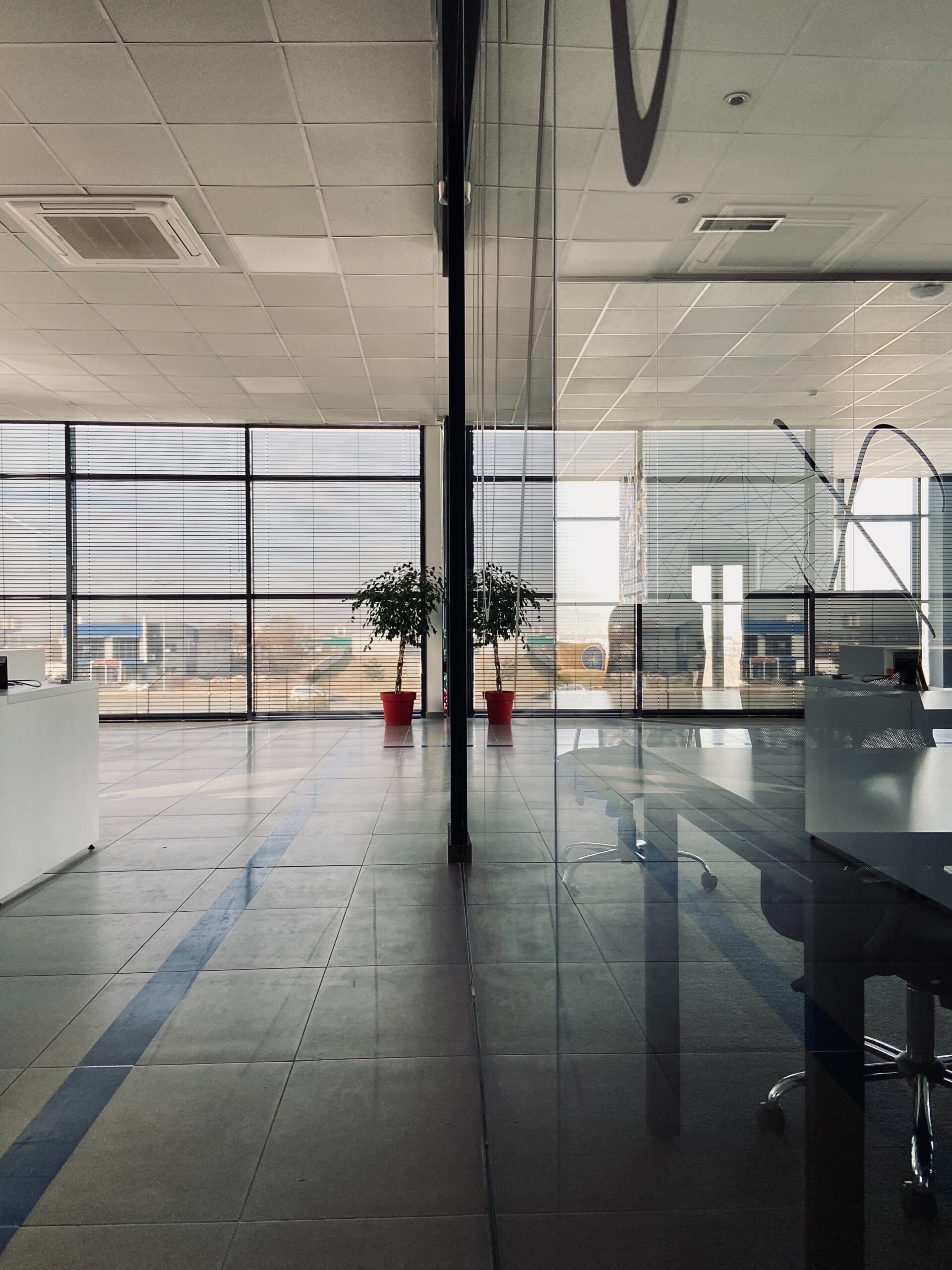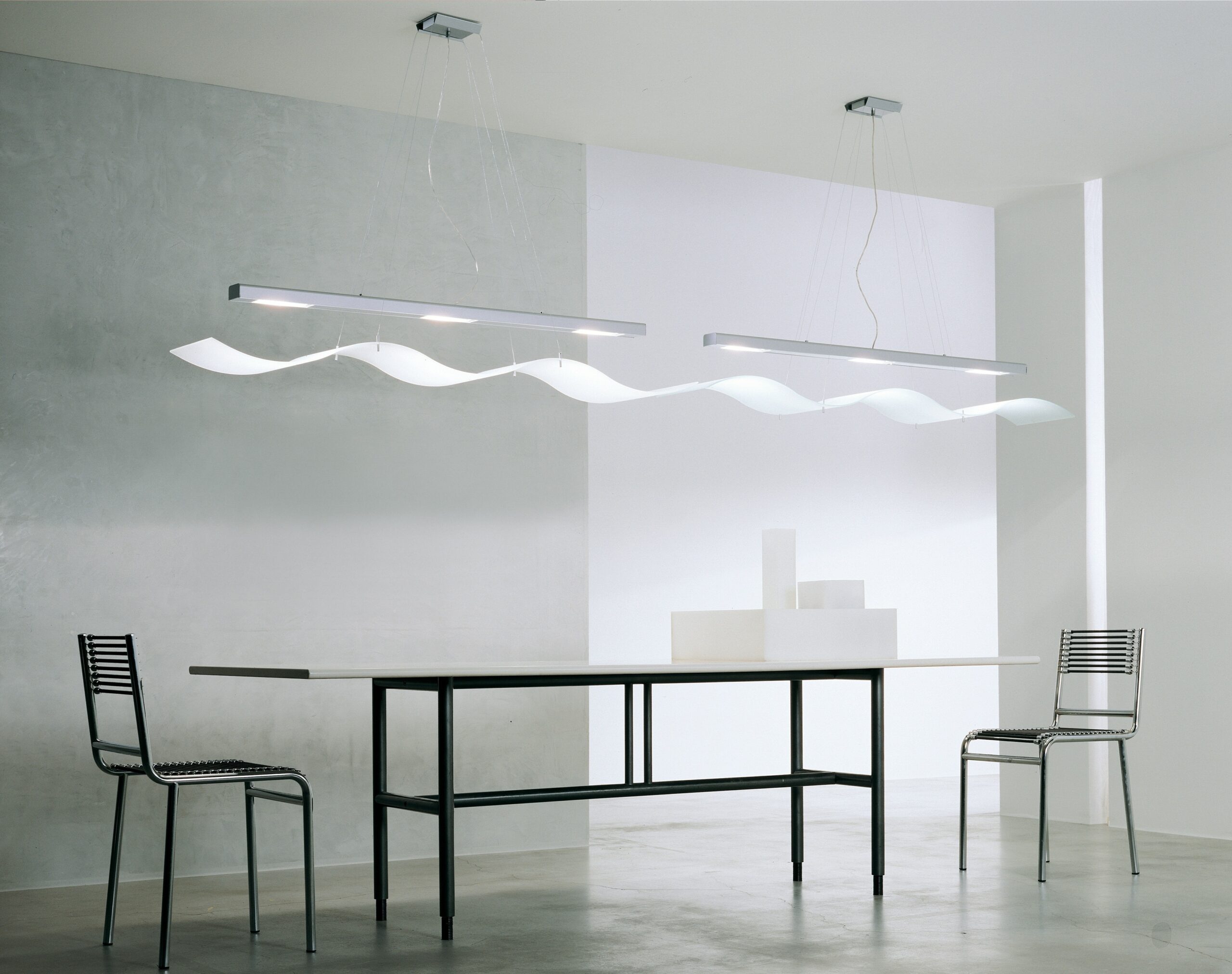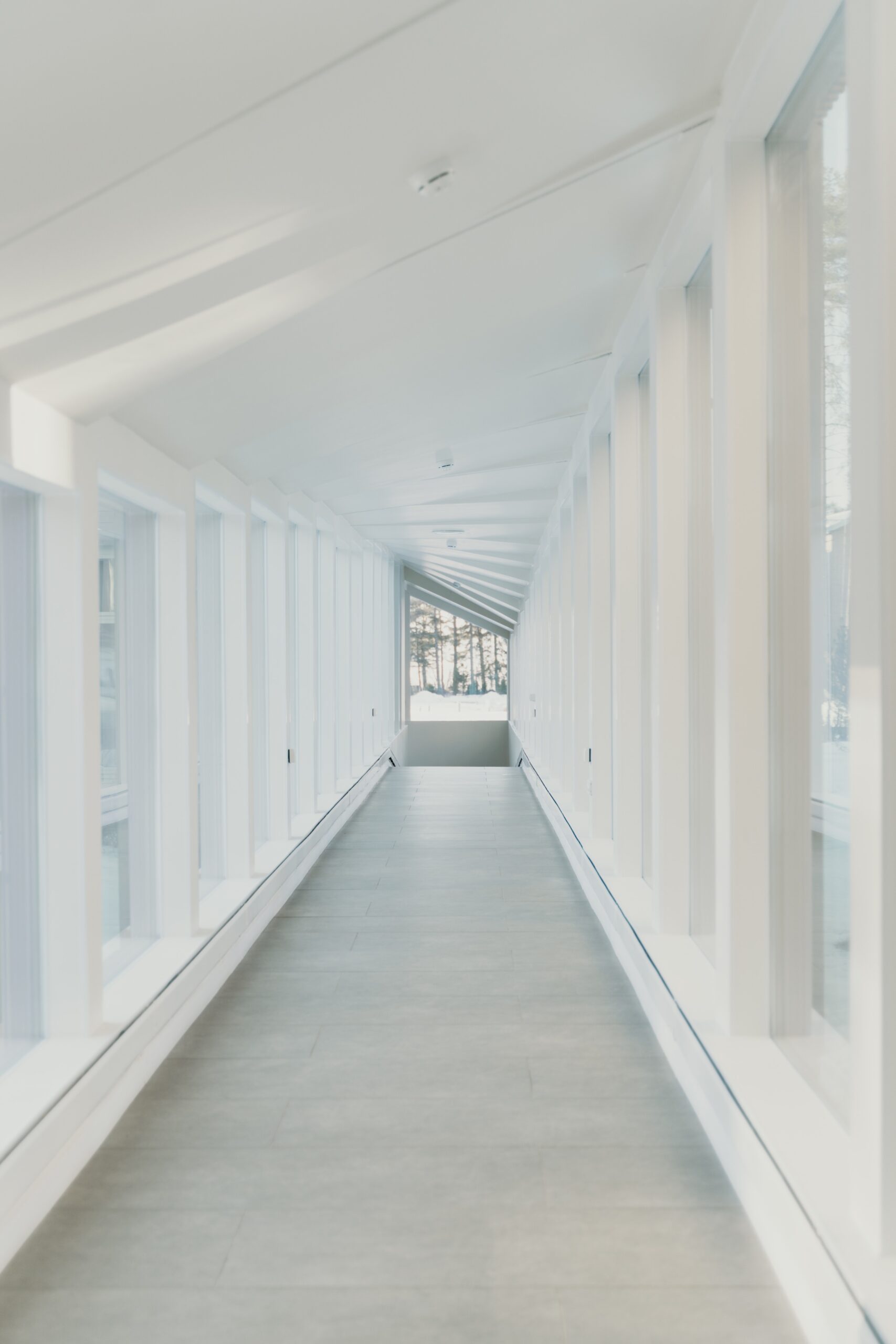Melissa loved stuff growing up, whether it was collecting junk mail or special things, but two specific events changed her whole outlook on stuff. In 2010, Melissa lost her first child, Aiden. On her blog, she discusses how this tragedy changed her outlook saying, “I realized that the things we own are just things. It’s just stuff. What really matters in life are the people we share it with. I became less attached to my possessions and knew I wanted to fill my life with people I love, not things I own”. Sick of shoving various products to the back of her bathroom cupboards, Melissa decided to get a giant garbage bag and fill it with anything she could see she didn’t use or love. After getting rid of stuff, Melissa felt a heavyweight off her shoulders and was able to let go and continue on the path to minimalism.
Here’s how to create a minimalist home:

Minimalist open-concept (Photo by: Bali Demiri, Pexels)
Architect Ludwig Mies van der Rohe, the father of minimalism, used a minimal framework of structural order to create a “skin and bones” building that emphasized open space. To create an open concept feel, fewer walls are key. Windows create a ton of light seeping into your home that helps to increase the apparent size. Openings between rooms rather than walls with doors help the daylight be soaked up from all rooms. To help differentiate rooms without walls as barriers, changing the material of the floor from room to room helps create these boundaries subtly. Having easy access to the outdoors by implementing a ton of windows and glass doors to nature emphasizes a natural open concept. All of this being said, the space is not meant to be the main focus of a minimalist home.
Robert Brown, an interior designer, describes minimalism as allowing something other than the space to be the focus, detailing, “Everything should be functional and add value to the space”. In a minimalist home, it is important that everything be purposeful with furniture adding value. It is vital to implement furniture that is not just visually pleasing but comfortable and practical. Decor can be seen as a visual touch that serves no purpose but minimalist homes try to maximize their purpose and not have it just for show. Decorative storage is a great way to add a personal touch while also creating space to store things that are not visually pleasing. To create your perfect minimalist home, form is incredibly important.

Clean lines (Photo by: Pixabay, Pixels)
Ludwig Mies van der Rohe coined the phrase “less is more” to show that simplicity and clarity lead to good design in a minimalist home. The design is meant to be efficient, with little complexity to confuse the eye and instead create a sense of efficiency that is so straightforward. This helps to keep a clear mind with less clutter from your surroundings. In a minimalist home, lines are meant to be unbroken and uninterrupted which is why flat roofs are typically used instead of pitched. Clean lines in a home can be embraced by furniture with straight edges and flat surfaces to create a more sleek and functional feel. When deciding on everything that goes into a minimalist home, materials need to be taken into account.

Minimalist light-filled hallway (Photo by: cottonbro, Pixels)
“We must remember that everything depends on how we use a material, not on the material itself … New materials are not necessarily superior. Each material is only what we make it.” -Ludwig Mies van der Rohe
When choosing the materials of a minimalist home, they are not to distract from the structure itself. The honesty of materials used is vital as materials can be faked but their true texture and warmth get lost. Glass, steel, and concrete are essential to minimalism because they are simple and not distracting. Mies relied heavily on the use of glass for enclosure in order to create a flexible open space, blurring the lines between a building’s interior and exterior. Glass creates a sleek look but also allows transparency and light into a space to create that warm feeling. Leather is often used to upholster chairs and sofas because it is comfortable and pliable. Some common materials used for a minimalist bed frame include wood, metal, and steel and they usually tend to be low to the ground to highlight space. Concrete is often used for the floor in a minimalist home because of its raw durability.
Alex Devero, a designer and developer from the Czech Republic, maintains that “Colors can help you communicate the message of your design in different and stronger tones. Colors can also help you evoke different moods and emotions in users. Just by using the right color, you can transform a design that was boring into something bold and fresh”.
It is a common misconception that in order to achieve a minimalist home, everything needs to be neutral colors. Minimalist design is about natural and soft tones, not just beige. When using color in designing a minimalist home, it is important to use primary colors, the most minimal and simple version. It is important when choosing a color to make sure it matches the purpose or the feeling you are trying to convey in that particular room. Yellow is often associated with happiness whereas orange and red are colors that will fuel you with energy. Blues and greens are colors that help create a sense of relaxation and tranquility. In creating a minimalist home with color, the color needs to complement the elements the home possesses. A minimalist color palette tends to include light colors so they fade into the background to create a feeling of airy and softness. While Mies’s color in his projects was subtle, he implemented things like tinted glass and curtains. The color in his work contributed to the overarching plan and gave the experience vitality.
While minimalism can help people take control of their life, it is not a lifestyle for everyone. Jennifer McCartney wrote a piece for Architectural Digest titled “Why Minimalism is BS”, discussing why it isn’t doing any favors. McCartney believes that a minimalist lifestyle isn’t sustainable because it is impossible to maintain when life gets in the way. She goes on to say that being messy is natural and healthy according to scientific studies. She explores how messy environments can boost creativity, be an effective organizational tool, and harness authenticity. Whether you decide minimalism is for you or that you want to embrace imperfection, it is all about what works best for your lifestyle and creating a home that captures you.
Works Cited
“25 Easy Ways to Add Color to a Minimalist Home.” DigsDigs, 13 Apr. 2021, https://www.digsdigs.com/add-color-to-a-minimalist-home/.
Adc, et al. “5 Flooring Types to Consider When Designing a Minimalist Home.” AllDayChic, 10 June 2021, https://alldaychic.com/minimalist-home-design-flooring/.
Cherry, Kendra. “The Impact of the Color Yellow on Your Mood.” Verywell Mind, Verywell Mind, 25 Mar. 2020, https://www.verywellmind.com/the-color-psychology-of-yellow-2795823.
Edwards, Ashley. “5 Types of Bedframes for Your Minimalist Bedroom.” Dig This Design, Ashley Edwards Http://Development.digthisdesign.net/Wp-Content/Uploads/2016/11/OLD_DigThisDesign_logo.Jpg, 2 Aug. 2021, https://digthisdesign.net/diy-design/bedroom/5-types-of-bedframes-for-your-minimalist-bedroom/.
Facebook.com/lex.devero. “6 Fundamentals of Great Minimalist Design You Must Know PT2.” Alex Devero Blog, 28 Nov. 2017, https://blog.alexdevero.com/fundamentals-great-minimalist-design-pt2/.
“How to Achieve a Minimalist Design in Your Home.” 50 Floor, 27 Dec. 2021, https://50floor.com/blog/how-to-achieve-a-minimalist-home-design/.
“How to Open up Living Spaces.” HGTV, https://www.hgtv.com/design/remodel/interior-remodel/how-to-open-up-living-spaces-pictures.
Life, Author Simple Lionheart. “Why I Became a Minimalist: Life with Less.” Simple Lionheart Life, 4 Oct. 2021, https://simplelionheartlife.com/became-a-minimalist-life-with-less/.
“Ludwig Mies Van Der Rohe.” Architectuul, http://architectuul.com/architect/ludwig-mies-van-der-rohe.
McCartney, Jennifer. “Why Minimalism Is Bs.” Architectural Digest, Architectural Digest, 30 Mar. 2018, https://www.architecturaldigest.com/story/why-minimalism-is-bs.
“Mies-Conceptions.” The Lying Truth, 10 Nov. 2011, https://thelyingtruthofarchitecture.wordpress.com/2011/08/28/mies-conceptions/.
“Minimalist Colors That Makes Your Life More Simple.” The Core Basics, https://thecorebasics.com/blog/minimalist-colors-that-makes-your-life-simpler/.
Richardson, Anthony. “How Less Is More – a Look at Minimalist House Design and Minimalism.” Simple Dwelling, Simple Dwelling, 11 Feb. 2022, https://simpledwelling.net/episodes/docuvids/how-less-is-more.
Samantha Myers | Dering Hall Samantha Myers is an editor for Dering Hall writing about interior design. “Here’s Everything You Need to Know about Minimalist Design.” ELLE Decor, 17 May 2019, https://www.elledecor.com/design-decorate/interior-designers/a27471472/minimalist-interior-design-tips/.
student, AuthorAnushka Sharma An architecture, et al. “10 Things to Remember While Designing Minimalist Architecture – RTF: Rethinking the Future.” RTF | Rethinking The Future, 19 Nov. 2021, https://www.re-thinkingthefuture.com/designing-for-typologies/a3404-10-things-to-remember-while-designing-minimalist-architecture/.
The. “What Material Is Best for Furniture.” The Minimalist Website, Minimalism Lists & Ideas, 14 Aug. 2020, https://www.theminimalist.com.au/2020/08/14/what-material-is-best-for-furniture/.
 NOLAbeings
Multimedia artist Claire Bangser created NOLAbeings as a portrait-based story project that marries...
NOLAbeings
Multimedia artist Claire Bangser created NOLAbeings as a portrait-based story project that marries...
 Data corner: Adobe Suite (create a PDF, social media graphic, presentation, edit a photo and video
Data corner is where you go to work with analytics and top tech skills. It takes on everything from PERL and SQL to Canva and Sprout Social.
Data corner: Adobe Suite (create a PDF, social media graphic, presentation, edit a photo and video
Data corner is where you go to work with analytics and top tech skills. It takes on everything from PERL and SQL to Canva and Sprout Social.
